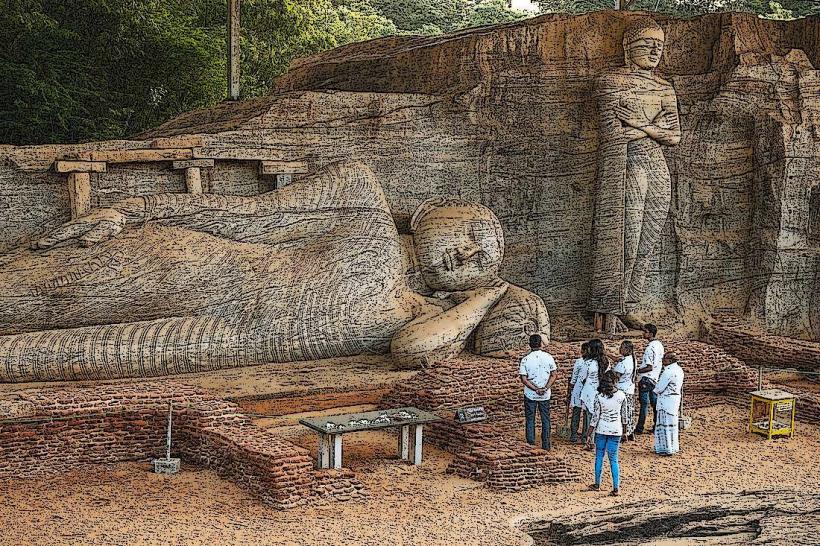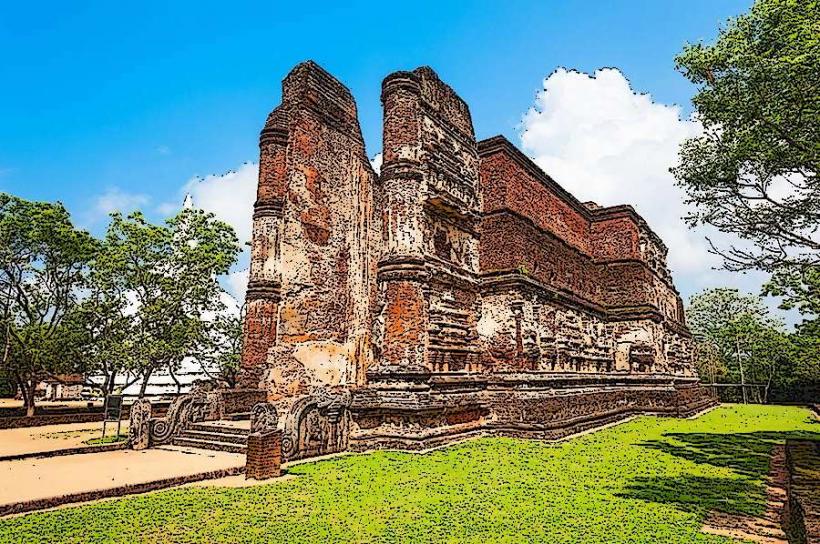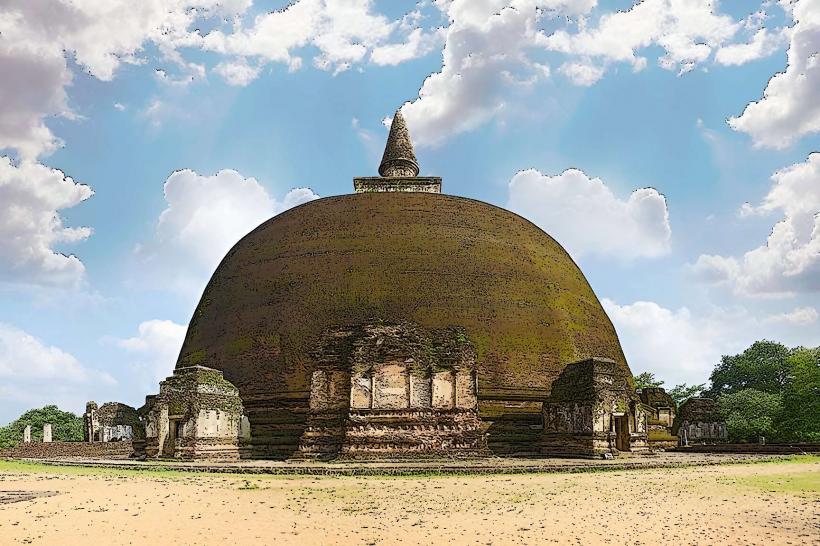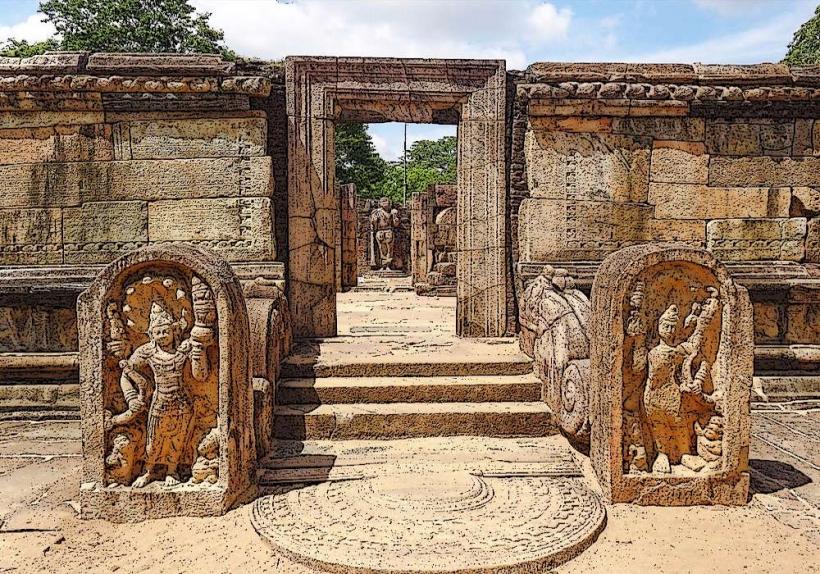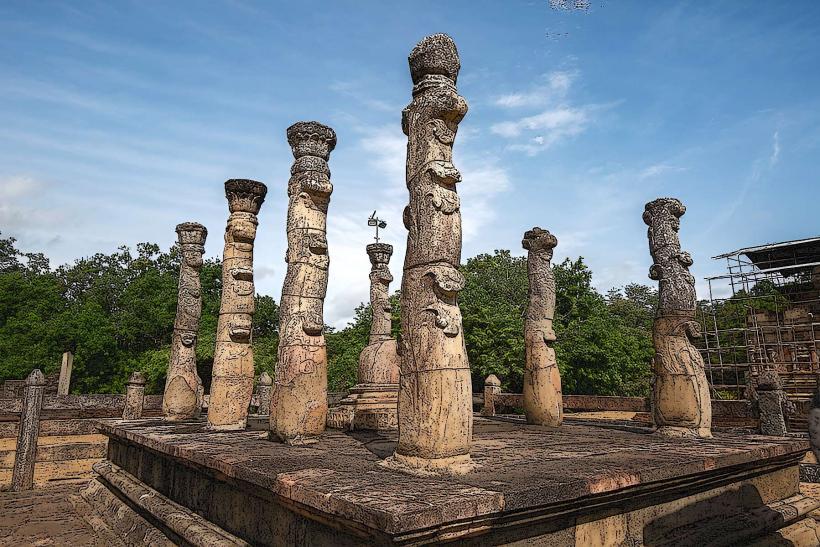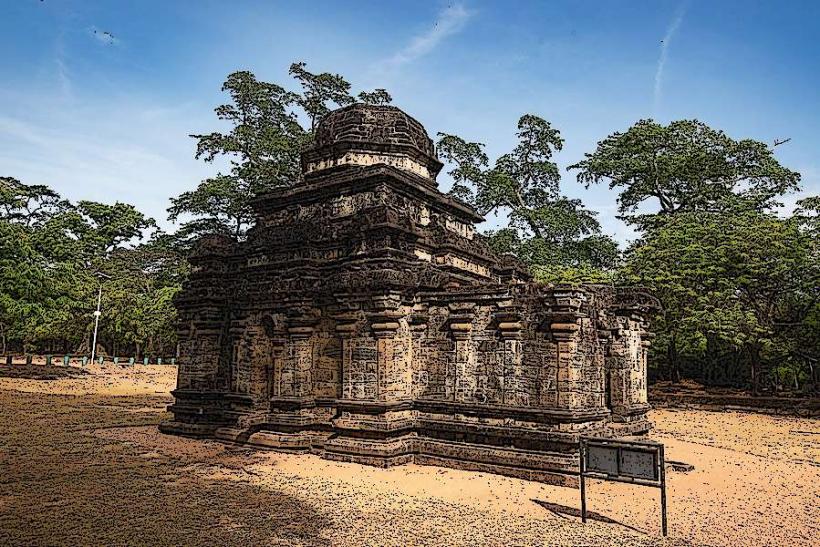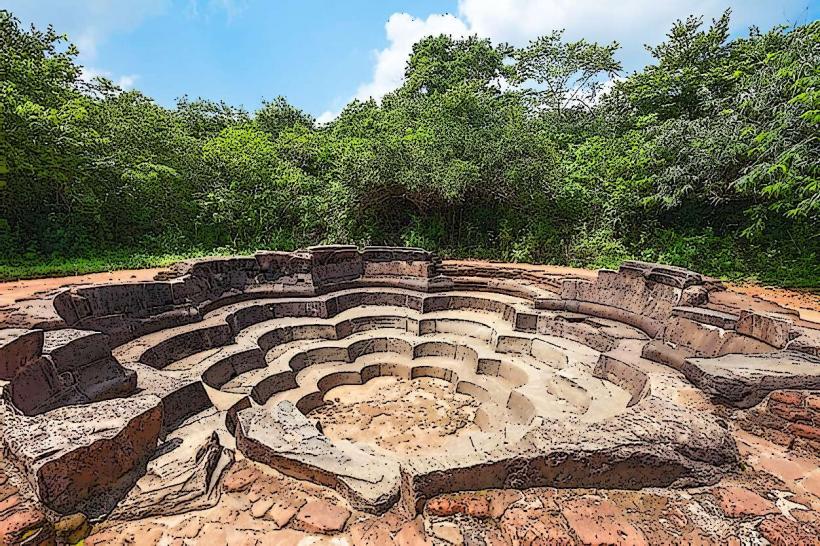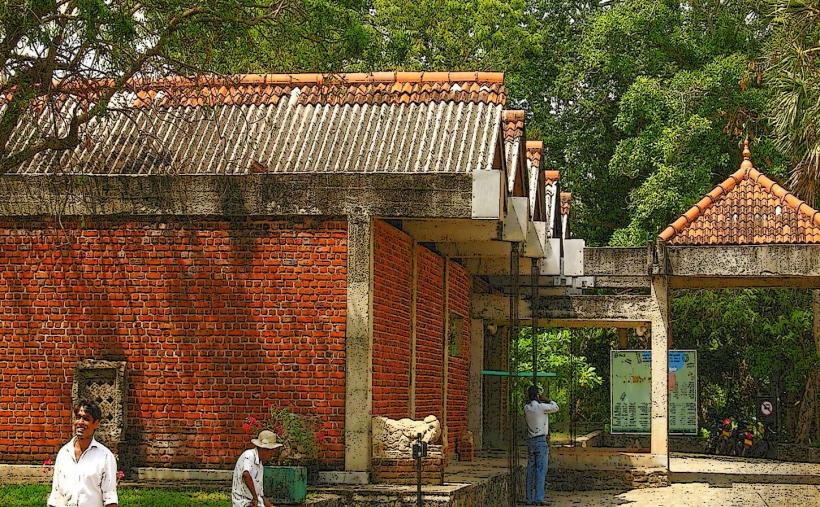Information
Landmark: VatadageCity: Polonnaruwa
Country: Sri Lanka
Continent: Asia
Vatadage, Sri Lanka
Vatadage is a significant ancient Buddhist structure located in Polonnaruwa, Sri Lanka. It is one of the most well-preserved and important examples of Polonnaruwa period architecture (12th century CE) and holds historical, architectural, and religious significance. The Vatadage is a circular relic house that was built to enclose and protect the sacred relics of the Buddha, symbolizing the deep connection between Buddhism and the Polonnaruwa kingship.
Overview
- Name: Vatadage
- Location: Polonnaruwa, North Central Province, Sri Lanka
- Date: Built during the reign of King Parakramabahu I (1153–1186 CE)
- Type: Circular Buddhist Relic House
- Purpose: Religious, Sacred Relic Housing, Ceremonial
Historical and Cultural Significance
King Parakramabahu I’s Role:
- The Vatadage was constructed during the reign of King Parakramabahu I, one of Sri Lanka’s most significant monarchs, known for his patronage of Buddhism and his efforts to revitalize the island’s religious and cultural practices. His reign marked a period of prosperity and significant construction, and Vatadage is a standout example of his contributions to Buddhist architecture.
- King Parakramabahu I was instrumental in restoring and maintaining important Buddhist sites across Sri Lanka, and the Vatadage was built as part of his efforts to protect the Buddha’s relics and to enhance the spiritual significance of the kingdom.
Buddhist Relic Housing:
- The Vatadage was designed as a relic house intended to protect and house sacred Buddhist relics, which were believed to hold immense spiritual power. The structure symbolizes both the protection of the relics and the deep reverence of the Buddha.
- It is one of the few examples of a circular relic house in Sri Lanka, and it likely housed important Buddhist relics, such as pieces of the Buddha's body or objects associated with his teachings.
Architectural Masterpiece:
- The Vatadage is a circular, open-sided structure supported by stone pillars, and it features a central shrine where the relics would have been kept. The outer part of the structure is surrounded by a stone platform that provides access to the inner sanctum.
- The design is remarkable for its symmetry, stone carvings, and elaborate design, showcasing the high level of craftsmanship that existed in Polonnaruwa. The circular design symbolizes wholeness and eternity, which are key concepts in Buddhist philosophy.
Key Features
Circular Structure:
- The circular design of the Vatadage is the most striking architectural feature. This shape was symbolic in Buddhism, representing the idea of eternity and the cycle of life. It was built to enclose the sacred relics and provide a protected and serene space for worship.
- The outer circle is supported by stone pillars, while the inner sanctum contains a raised platform, which would have held the relic casket or relic shrine.
Stone Pillars:
- The Vatadage is surrounded by stone pillars that support the structure’s roof (though only the stone pillars remain today). These pillars are beautifully carved with intricate patterns and have been important in preserving the architectural integrity of the building. They form a ring of protection around the sacred space and are a key feature in the design.
Platform and Steps:
- The stone platform surrounding the Vatadage was built to provide access to the inner sanctum where the relics were housed. Stone steps lead up to the platform, and the platform itself is adorned with detailed stone carvings that reflect Buddhist symbolism and teachings.
- The platform and steps are beautifully constructed, with elements of granite and other stones that were available in the region, giving the structure a sense of grandeur.
Stone Carvings:
- One of the most distinctive aspects of the Vatadage is its stone carvings. The pillars, platforms, and other parts of the structure are adorned with detailed carvings that feature Buddha images, lotus motifs, and floral patterns. The intricacy of the carvings showcases the advanced stone carving techniques of the time and the artistic prowess of the Polonnaruwa artisans.
- Some carvings represent Buddhist Jataka tales and scenes from the Buddha's life, which would have been used for educational purposes as well as religious ones.
Central Shrine:
- At the center of the Vatadage, there is a raised platform, which is believed to have been the site where the Buddha’s relics were kept. Today, the platform remains as a symbolic focal point, even though the original relics have long since been moved. The central location reflects the importance of these relics and the spiritual gravity they held.
Visitor Experience
Exploring the Vatadage:
- Visitors to the Vatadage can explore its stone pillars, platform, and stone carvings, which provide a fascinating glimpse into the architectural excellence of the Polonnaruwa period.
- The structure’s open sides allow for a view of the surrounding Polonnaruwa ruins, offering a peaceful and reflective atmosphere. The Vatadage is one of the best-preserved examples of ancient Sri Lankan architecture, and exploring the site provides a deeper understanding of the Buddhist architectural traditions.
Learning about Buddhism and Architecture:
- Information boards at the site explain the symbolism behind the Vatadage’s circular shape, the importance of relic housing, and the Buddhist significance of the structure. These educational insights help visitors connect the architecture with its religious and cultural context.
- The Vatadage also provides visitors with a chance to learn about the role of kingdoms in preserving Buddhist relics and how the physical structure of the Vatadage was designed to reflect Buddhism's core values.
Photography and Scenic Views:
- The Vatadage is an excellent location for photography. The intricate stonework, combined with the surrounding natural beauty of Polonnaruwa, creates a striking visual. The site offers multiple angles and perspectives, giving visitors the opportunity to capture the elegance of ancient Sri Lankan architecture.
Conclusion
The Vatadage in Polonnaruwa is an outstanding example of Buddhist architecture from the Polonnaruwa period. Built during the reign of King Parakramabahu I, it was originally designed to protect sacred Buddhist relics and reflects the king’s devotion to Buddhism and spirituality. The circular structure, stone carvings, and intricate design of the Vatadage make it a must-visit site for those interested in Sri Lanka’s ancient architectural heritage and its connection to Buddhist culture. The Vatadage’s continued preservation offers a unique insight into the grandeur and religious importance of Sri Lanka’s ancient monastic architecture.


